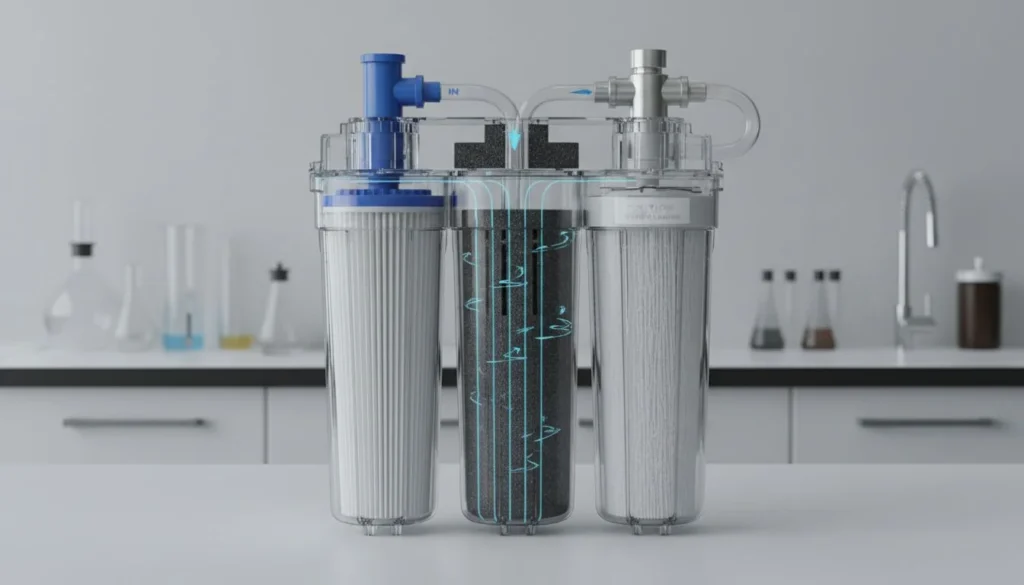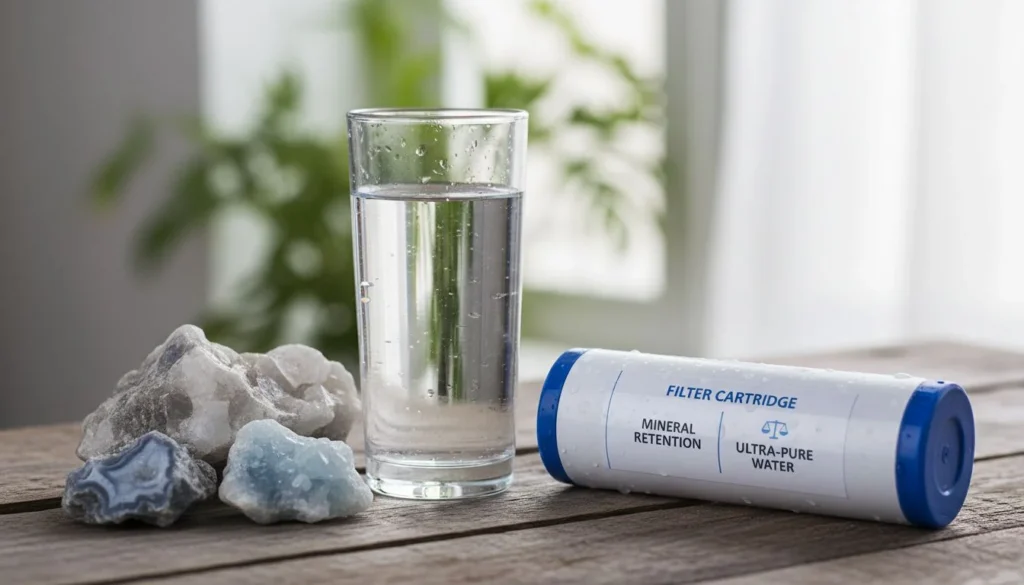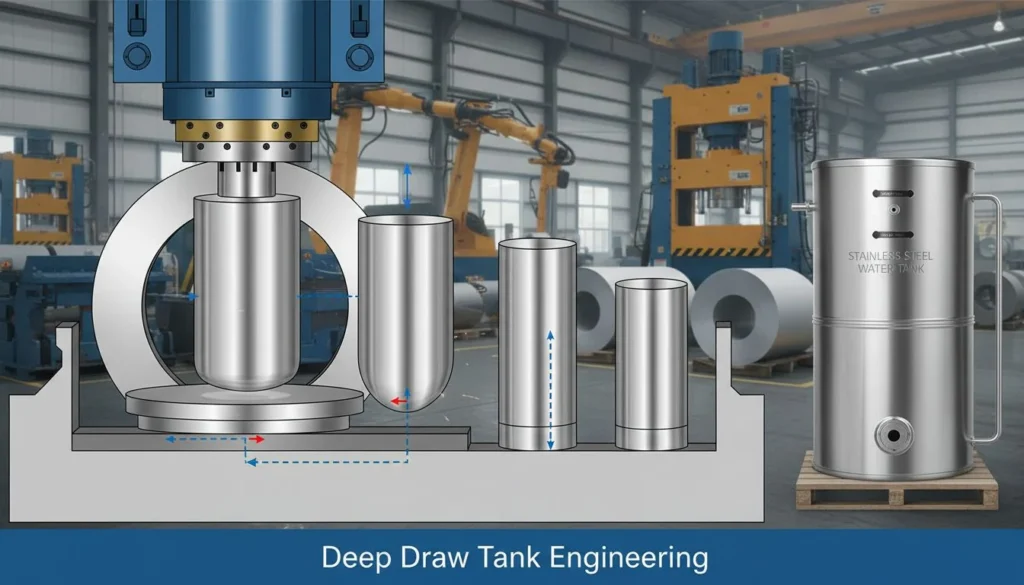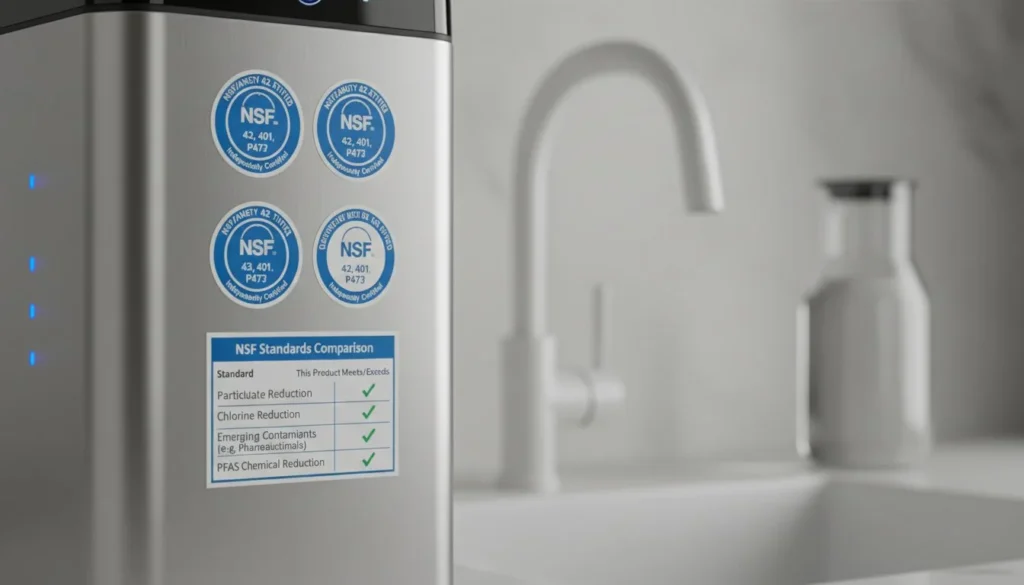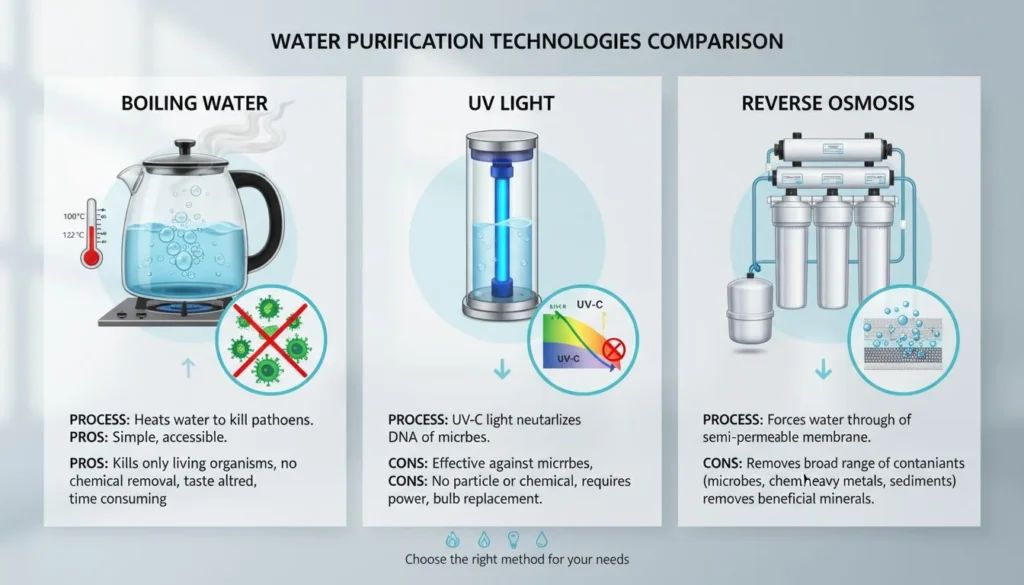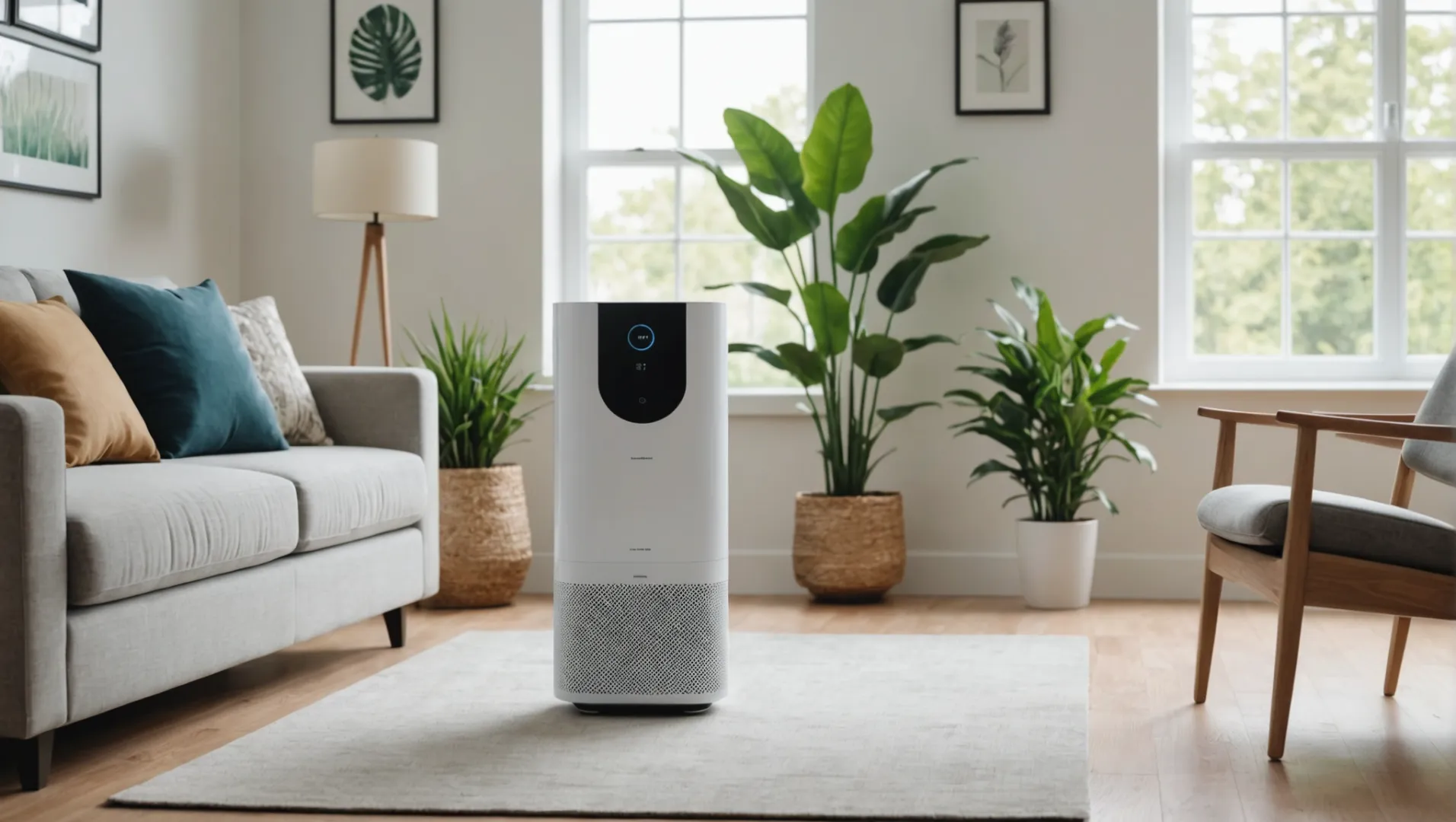
In a world where our health is more intertwined with air quality than ever before, understanding how to ensure my air purifier meets recognized standards has become essential.
To make your air purifier compliant with AHAM standards, focus on achieving the appropriate Clean Air Delivery Rate (CADR) for your room size and adhere to the '2/3 Rule'. This ensures efficient pollutant filtration and optimal air quality.
While grasping CADR ratings and the '2/3 Rule' is a fantastic starting point, there's so much more to learn about ensuring your air purifier aligns with AHAM and related standards. Let's journey through this detailed guide together, where we'll uncover certifications, emerging regulations, and practical tips for making informed decisions.
AHAM's '2/3 Rule' ensures optimal air purifier efficiency.True
The '2/3 Rule' matches the purifier's capacity to room size for efficiency.
What is the AHAM '2/3 Rule' and How Does It Affect Air Purifier Performance?
The AHAM '2/3 Rule' is a critical guideline for air purifier efficiency, impacting indoor air quality significantly.
The AHAM '2/3 Rule' dictates that the Clean Air Delivery Rate (CADR) of an air purifier should be at least two-thirds of the room's area in square feet. This rule ensures efficient air cleaning by matching the purifier's capacity to the size of the room.
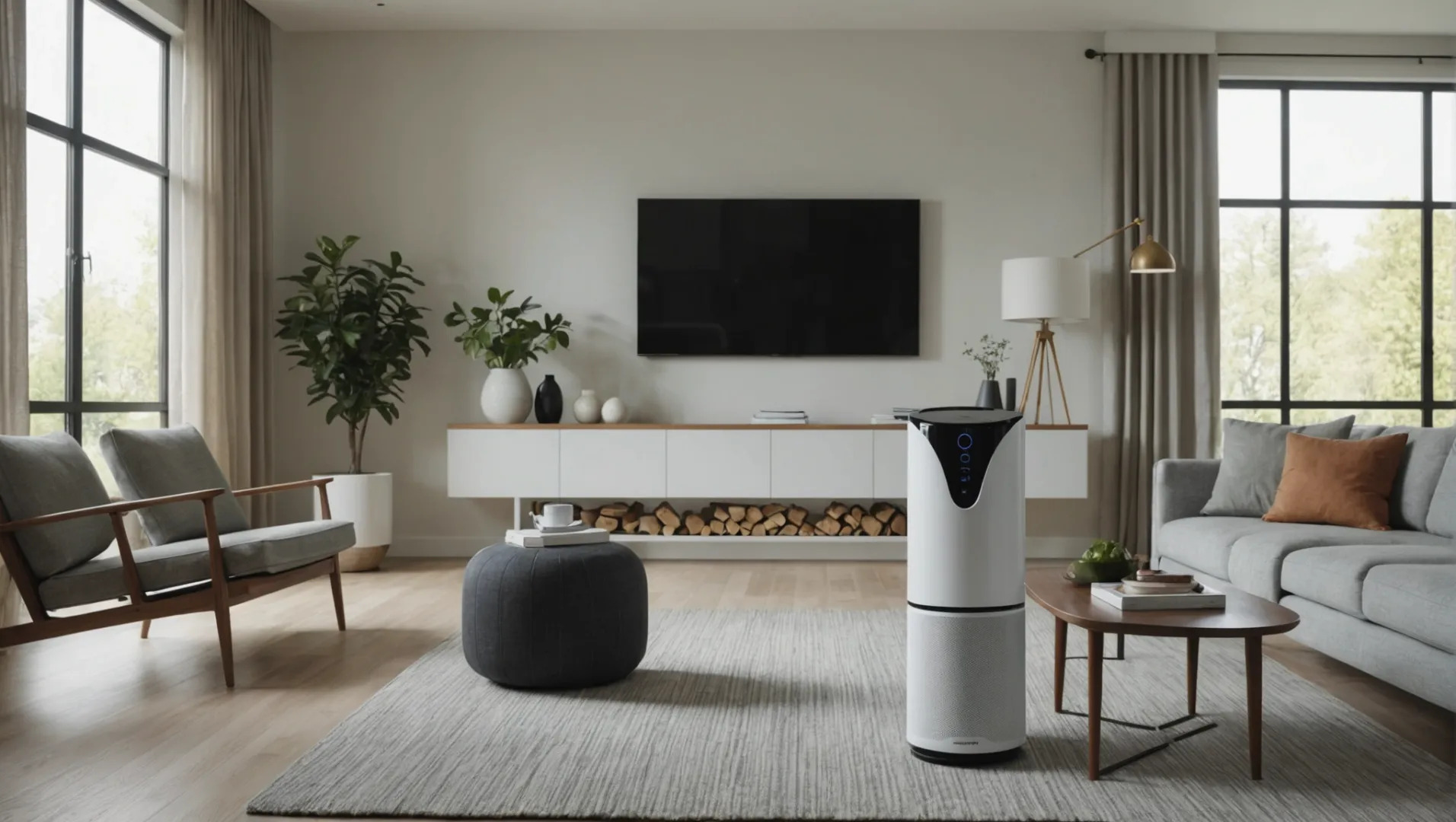
Understanding the AHAM '2/3 Rule'
The Association of Home Appliance Manufacturers (AHAM)1 established the '2/3 Rule' as a benchmark for determining an air purifier's effectiveness in a given space. Essentially, the CADR should meet at least two-thirds of your room size in square feet. For instance, if you have a 150-square-foot room, your air purifier should have a CADR of at least 100. This guideline is crucial because it ensures that the air purifier can effectively reduce airborne particles, maintaining optimal indoor air quality.
The Science Behind CADR and Its Impact
The Clean Air Delivery Rate (CADR) measures the volume of filtered air delivered by an air purifier. It reflects the purifier’s ability to remove specific pollutants, such as smoke, pollen, and dust, from the indoor environment. By adhering to the '2/3 Rule', manufacturers can ensure that their products are both efficient and reliable, offering consumers confidence in their air purification capabilities.
CADR Ratings and Their Significance
CADR ratings are given for three common pollutants:
| Pollutant | Typical CADR Needed for Effective Removal |
|---|---|
| Smoke | High CADR is essential due to small particle size. |
| Pollen | Moderate CADR as pollen is larger and less dense. |
| Dust | Similar to pollen but may require slightly higher CADR. |
By understanding these ratings and their importance, consumers can select air purifiers that best fit their needs, ensuring that their living environments remain safe and healthy.
Why Adherence to Standards Matters
Compliance with AHAM standards not only assures quality and performance but also aligns with evolving regulations like Energy Star and DOE certifications2. These certifications indicate that an air purifier is energy-efficient and meets stringent government guidelines, providing added peace of mind to consumers.
As new regulations emerge, such as the forthcoming DOE compliance requirement in 2024, understanding how to maintain these standards becomes even more critical. It's important to stay informed about changes in legislation that might affect product design and compliance.
Ultimately, understanding and applying the AHAM '2/3 Rule' allows manufacturers and consumers alike to make informed decisions about air purification solutions, contributing to better air quality and healthier living spaces.
The AHAM '2/3 Rule' requires CADR to be two-thirds of room size.True
This ensures the air purifier effectively cleans the room's air.
The '2/3 Rule' is unrelated to air purifier efficiency.False
The rule directly impacts how well an air purifier cleans air.
Why is CADR Important for Air Purifier Compliance?
Understanding CADR is key to ensuring your air purifier effectively cleans your indoor air.
CADR, or Clean Air Delivery Rate, measures the efficiency of an air purifier in removing pollutants. It is crucial for compliance with standards like those set by the Association of Home Appliance Manufacturers (AHAM), ensuring devices are effective and meet consumer expectations.
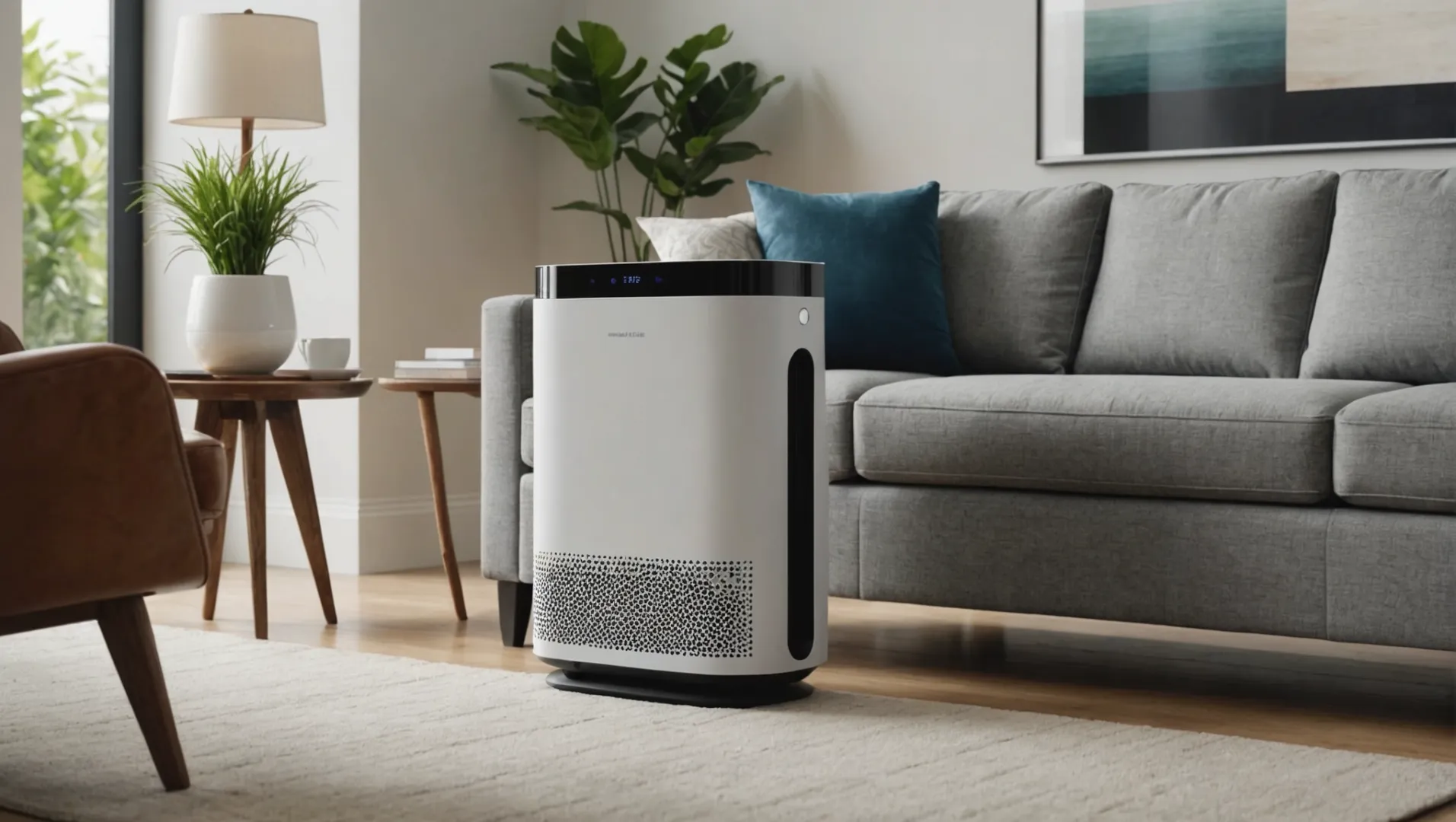
The Role of CADR in Air Quality
The Clean Air Delivery Rate (CADR) is a vital metric that indicates how quickly an air purifier can remove particles from the air. It's expressed in cubic feet per minute (CFM) and represents the volume of filtered air produced. Higher CADR numbers mean faster pollutant removal, enhancing air quality3 significantly.
CADR is essential not only for evaluating an air purifier's performance but also for ensuring it meets industry standards. The AHAM uses CADR to test and verify air purifiers, providing consumers with reliable information.
Meeting AHAM Standards
To comply with AHAM standards, manufacturers must ensure their products achieve a certain CADR value based on room size. The '2/3 Rule' suggests that an air purifier should have a CADR equivalent to at least two-thirds of the room's area in square feet. For example, in a 150 square foot room, the CADR should be at least 100 CFM.
| Room Size (sq ft) | Minimum CADR (CFM) |
|---|---|
| 100 | 67 |
| 150 | 100 |
| 200 | 133 |
This compliance ensures that the purifier can efficiently remove pollutants like smoke, pollen, and dust, maintaining a healthy indoor environment.
CADR and Emerging Regulations
Beyond AHAM standards, new regulations such as AHARE 241 focus on maintaining a minimum of 6 air changes per hour (ACH). This upcoming compliance could make CADR even more critical for commercial spaces, where maintaining optimal air quality is crucial for health and productivity.
Manufacturers focusing on Energy Star4 certifications will also find CADR relevant, as it impacts the energy efficiency of purifiers. From 2024 onwards, all air purifiers entering the US market must meet Department of Energy (DOE) standards, further emphasizing the importance of CADR for compliance and market competitiveness.
Higher CADR means faster pollutant removal.True
CADR measures the rate at which an air purifier cleans air, higher values indicate quicker removal.
AHAM standards require CADR to equal room size in square feet.False
AHAM standards require CADR to be two-thirds of the room's area in square feet.
How Do Energy Star and DOE Certifications Impact Your Air Purifier?
In today's eco-conscious world, understanding certifications for air purifiers is key to making sustainable choices.
Energy Star and DOE certifications ensure air purifiers are energy-efficient and meet US standards. These certifications not only reduce electricity costs but also guarantee compliance with upcoming regulations, making your air purifier a smarter investment.
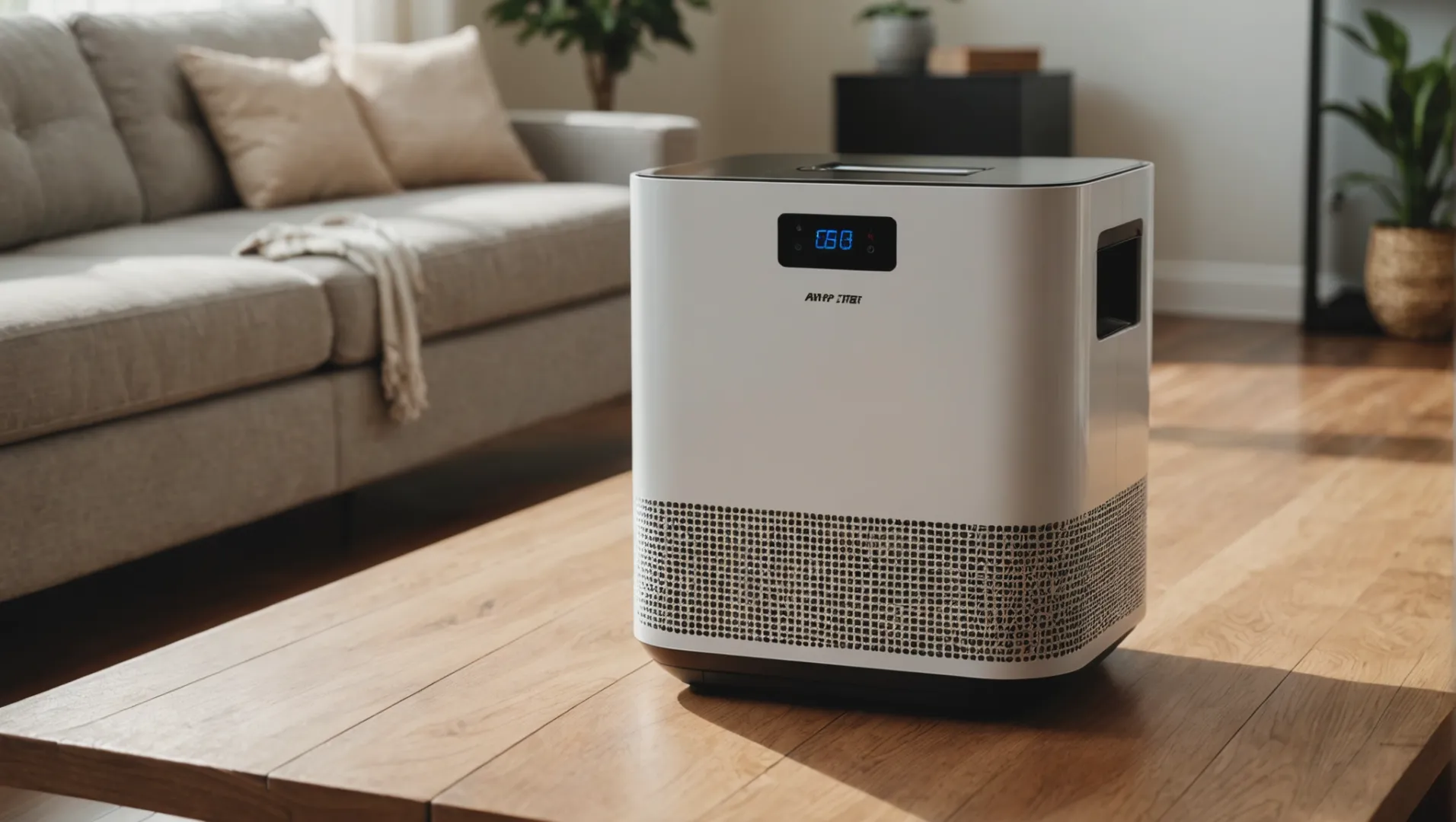
Understanding Energy Star Certification
Energy Star is a trusted symbol for energy efficiency. It signifies that an appliance, like an air purifier, meets or exceeds specific energy performance standards. For an air purifier, this means it operates efficiently without compromising on performance. This certification can lead to significant savings on energy bills, especially if the appliance runs continuously in environments where air quality is a concern.
By choosing an Energy Star-certified air purifier5, consumers are assured of reduced energy consumption, which aligns with sustainability goals and reduces their carbon footprint.
DOE Certification: A Must-Have from 2024
The Department of Energy (DOE) certification for air purifiers will be mandatory from 2024, setting a benchmark for energy efficiency across the industry. This certification ensures that all new air purifiers entering the US market meet minimum efficiency standards, which helps consumers avoid products that would otherwise consume more power.
DOE-certified products are tested under stringent conditions, ensuring they deliver high performance with minimal energy use. This becomes crucial as environmental concerns rise and consumers demand more sustainable products.
The Impact on Consumer Choices
With these certifications, consumers can make informed decisions about their purchases. The potential savings on utility bills due to reduced energy consumption can be significant. Moreover, with the DOE certification becoming mandatory, purchasing non-certified models might soon be out of the question.
For manufacturers, aligning with Energy Star and DOE standards6 not only enhances brand reputation but also expands market opportunities by meeting regulatory demands.
Industry Implications
These certifications also drive technological advancements within the industry. Manufacturers are compelled to innovate, focusing on energy-efficient designs that do not compromise on performance. As a result, we can expect air purifiers to become more sophisticated, offering enhanced features while consuming less power.
In conclusion, while these certifications initially seem like labels, their impact is profound—shaping consumer behavior, influencing manufacturing processes, and ultimately benefiting the environment.
Energy Star certification saves on energy bills.True
Energy Star-certified products are designed to be energy-efficient, reducing electricity costs.
DOE certification is optional for air purifiers in 2024.False
DOE certification will be mandatory from 2024 for all air purifiers in the US.
What is AHARE 241 Compliance and Why Should You Care?
AHARE 241 compliance represents a pivotal shift in air purification standards, impacting both manufacturers and consumers.
AHARE 241 compliance mandates air purifiers to ensure a minimum of six air changes per hour (ACH) in rooms and commercial spaces. This standard is crucial for maintaining optimal indoor air quality and is expected to be a significant factor in the air purifier market, especially in the United States post-2024.
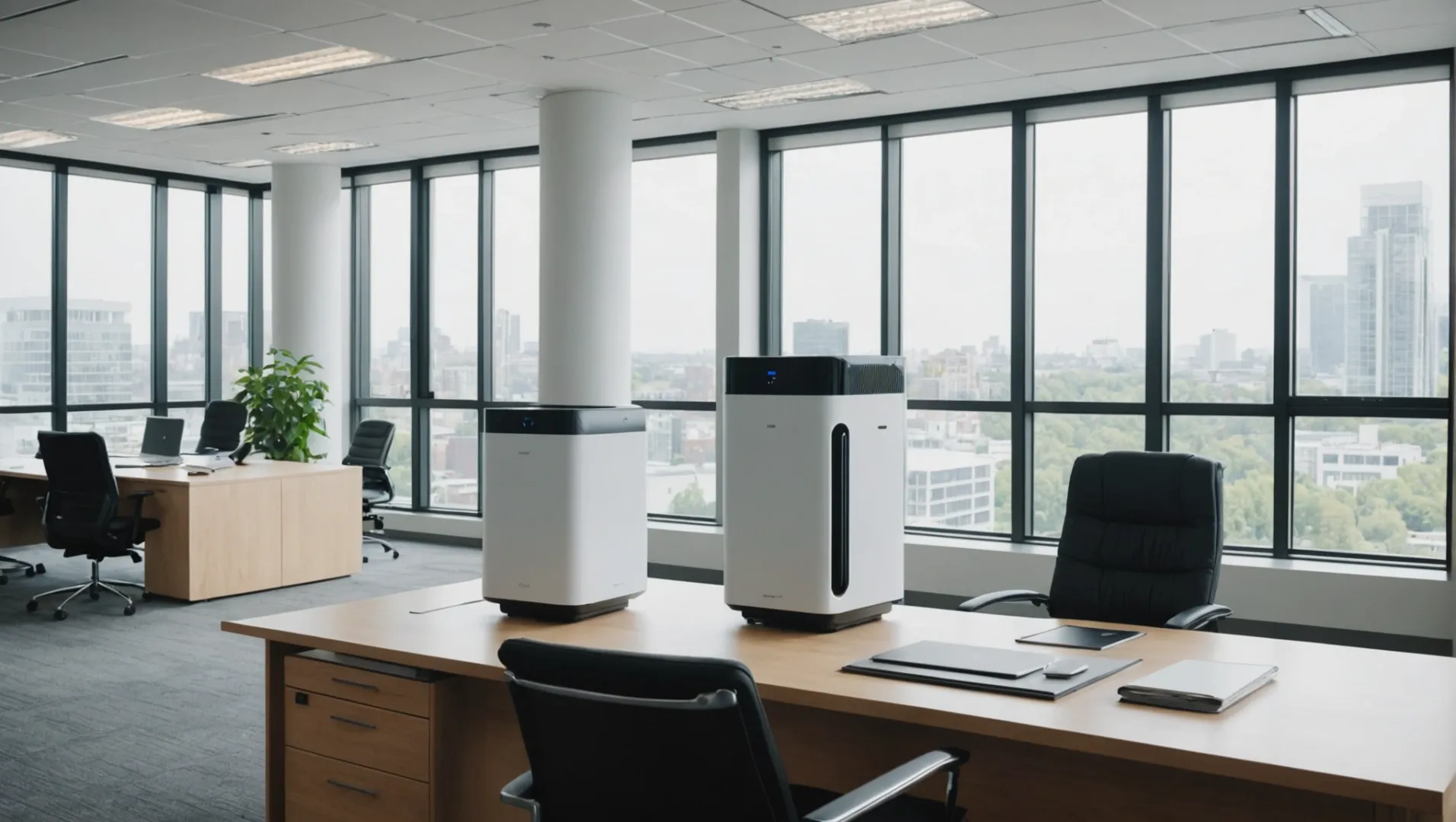
Understanding AHARE 241 Compliance
AHARE 241 compliance is an emerging standard aimed at revolutionizing how air purifiers are designed and utilized in various environments. The central requirement of this compliance is achieving at least six air changes per hour (ACH) in any given space, including residential rooms, commercial buildings, and HVAC systems. This benchmark ensures that air within these spaces is constantly refreshed, reducing the concentration of airborne pollutants significantly.
The introduction of this standard comes at a time when awareness about indoor air quality is at an all-time high. The COVID-19 pandemic has highlighted the importance of clean indoor air, prompting regulatory bodies to push for more stringent standards. As a result, AHARE 241 compliance will likely become a critical factor for manufacturers and consumers alike.
Implications for Manufacturers and Consumers
For manufacturers, aligning with AHARE 241 compliance means investing in research and development to create more efficient air purifiers capable of meeting the six ACH requirement. This could involve redesigning existing models or developing new technologies that enhance air flow and filtration capabilities.
For consumers, particularly those in the U.S., AHARE 241 compliance will soon become a key consideration when purchasing air purifiers. With new legislation expected post-2024, consumers should look for products that not only meet this standard but also boast certifications like Energy Star and DOE for energy efficiency.
The Future of Air Purification
The shift towards AHARE 241 compliance signifies a broader trend in the air purification industry. As the demand for cleaner indoor environments grows, so too does the opportunity for innovation in air purification technologies. Commercial air purifiers7 are expected to see significant growth, driven by new legislation and a heightened focus on maintaining safe and healthy indoor environments.
In summary, understanding and adopting AHARE 241 compliance is essential for anyone involved in the air purification market. Whether you're a manufacturer aiming to stay ahead of regulations or a consumer looking to ensure optimal indoor air quality, this compliance offers a clear pathway to achieving these goals.
AHARE 241 requires six air changes per hour.True
The standard mandates air purifiers achieve six ACH in any space.
Post-2024, AHARE 241 will not affect U.S. consumers.False
Post-2024, AHARE 241 will be crucial for U.S. air purifier choices.
Conclusion
Navigating AHAM compliance is key to ensuring effective air purification. By understanding CADR, certifications, and emerging standards, you can enhance air quality while staying ahead of regulations. Invest wisely in your health and the future of air purification.
-
Learn how this rule optimizes air purifier performance.: Follow AHAM's 2/3 Rule: You'll always want a unit with a tobacco smoke CADR at least 2/3 your room's area. For example, a 10 ft x 12 ft room - 120 square feet ... ↩
-
Discover how these certifications enhance efficiency and compliance.: ENERGY STAR certified room air cleaners are about 25% more energy-efficient than standard models, saving consumers about 120 kWh/year and $18 annually on ... ↩
-
Understand how CADR impacts indoor air quality and purifier efficiency.: Choosing an air purifier with a high CADR rating ensures that it is effective in cleaning the air of pollutants, such as dust, pollen, smoke, ... ↩
-
Learn about Energy Star benefits and requirements for purifiers.: ENERGY STAR certified room air cleaners are about 25% more energy-efficient than standard models, saving consumers about 120 kWh/year and $18 annually on ... ↩
-
Explore why Energy Star models are cost-effective and eco-friendly.: Room air cleaners with the blue ENERGY STAR label are 27% more energy efficient than standard models and can save consumers more than $130 over the lifetime of ... ↩
-
Learn how certifications boost market opportunities and brand reputation.: ENERGY STAR certified buildings use, on average, 35 percent less energy than similar buildings nationwide. The cost savings can be substantial. ↩
-
Discover the expanding opportunities in commercial air purification post-2024.: Improving air quality in your commercial space – air purifiers can remove dust, pollen, mould spores, viruses, bacteria, volatile organic compounds, and odours ... ↩


